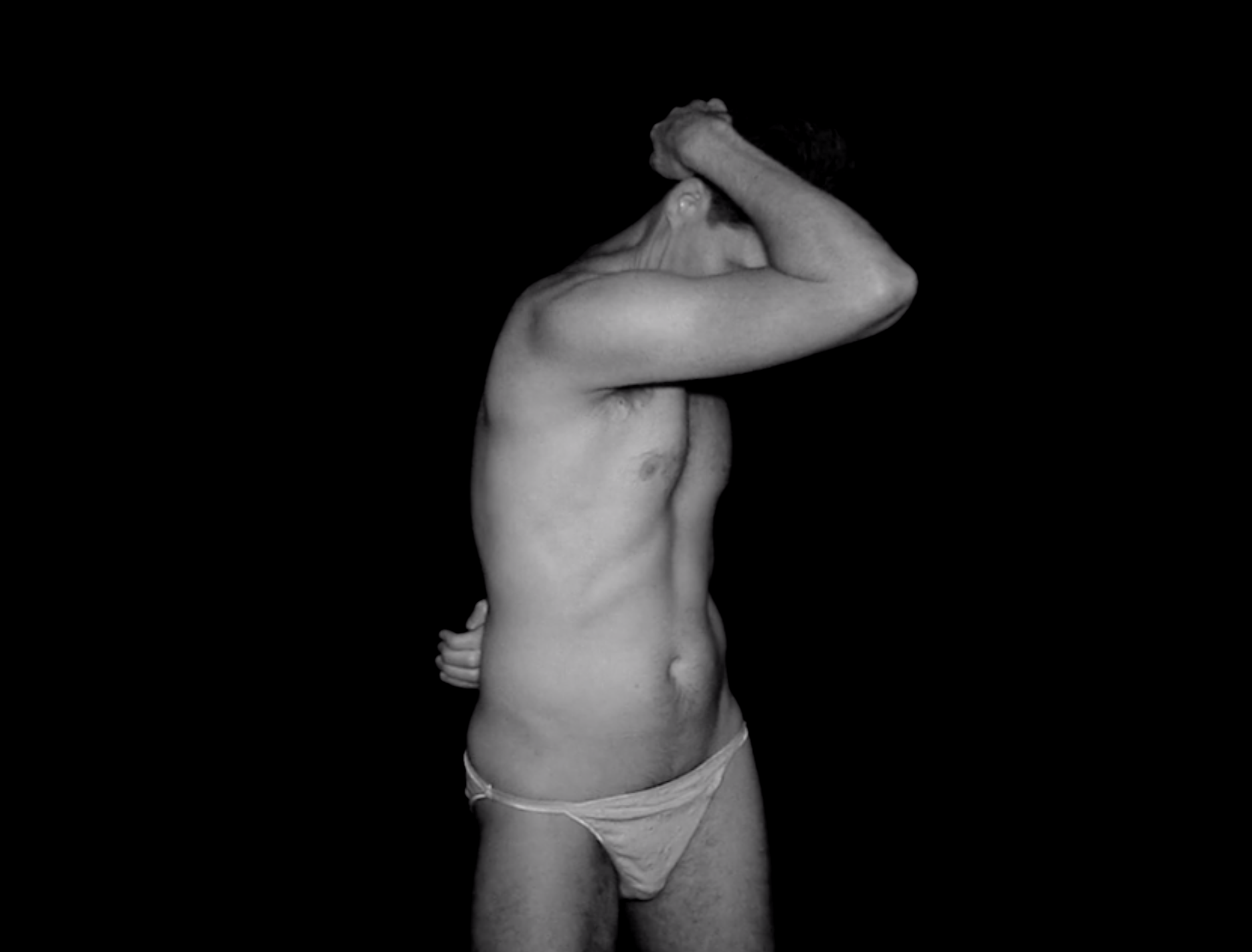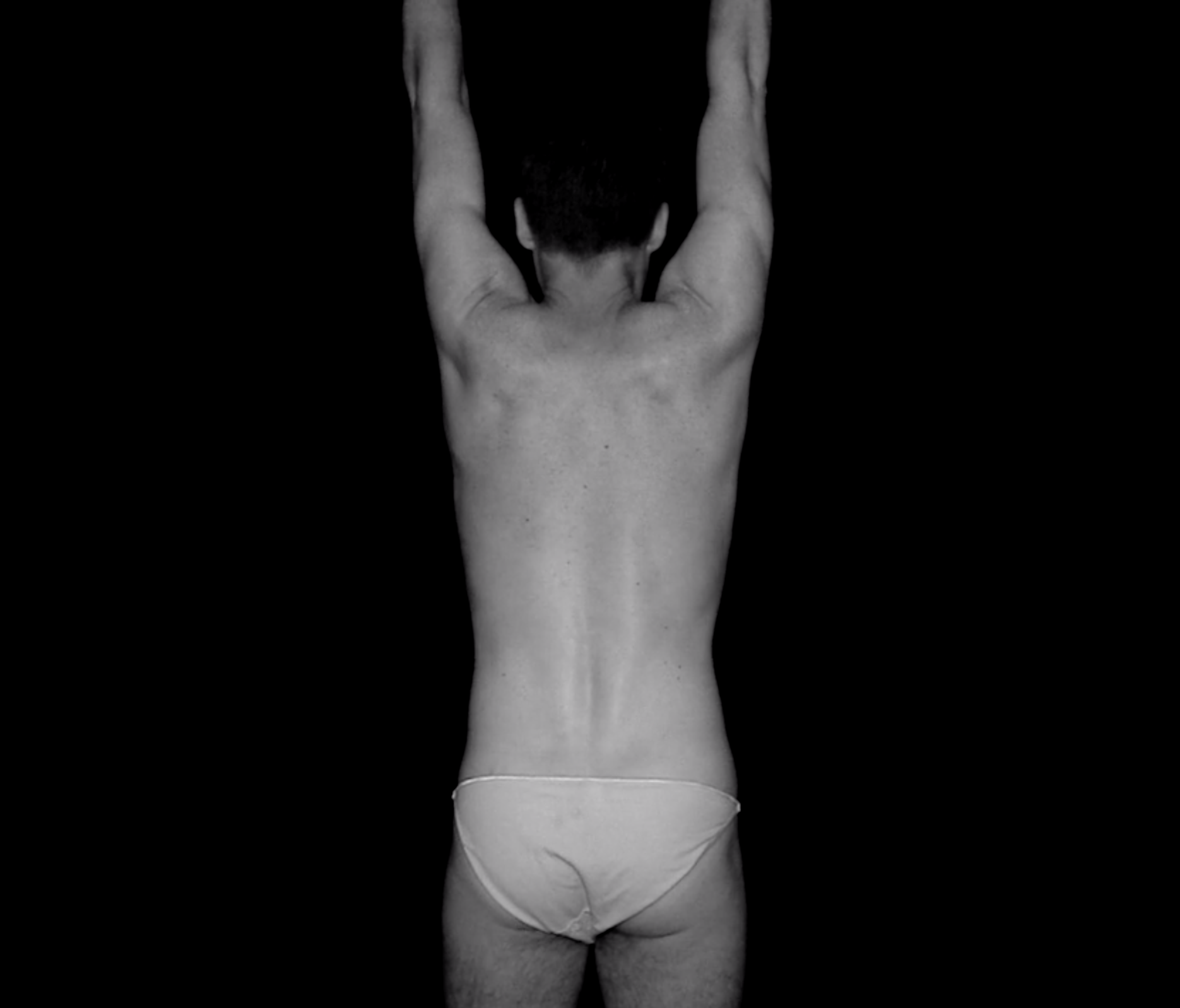Seeking Enlightenment Through Meditative Performance Art: The Work of Robert Ladislas Derr.
Robert Ladislas Derr’s piece ‘Safe Space’ featured in Round Lemon’s online exhibition, BODY. The work involved Derr holding the Plow Yoga pose naked in a forest with a lit candle in his anus as the sun set. Intrigued, I spoke to him about the piece, his intentions behind it, and the role of humour in performance art.
‘Safe Space’ 2017 (Still Image)
Growing up, did you have any idea you’d end up in the career you have and making the kind of work you do?
Yes, creativity started at a young age. As early as I can remember, I was fascinated with Kiss and Dungeon & Dragons, a disruption of reality and convention. I also excelled at such freestyle sports like skate boarding, surfing, and wrestling, all three require so-called outside of the box thinking. Expression has continually been a performative act for me.
Do you ever feel a bit silly when you’re making a piece of work? Do you think there’s any place for humour in performance art?
When I make a piece I am concentrating on executing my idea. There is no time to consider extraneous information. Ambiguity and levity drive me.
'Safe Space' is quite a bold piece of work. What were your thoughts leading up to the performance?
At the time of the performance giving safe spaces to marginalized groups was a social issue. The performance considers both the physical and psychological aspects of a safe space.
What is the significance of the candle? Is it a way to mark time?
Exactly, the candle marks time. The candle also represents the quest for enlightenment through meditation.
You’re a professor at the University of Nebraska. Do your students know of your work? What do they make of it? Have any of them been influenced by you in a way that was recognisable and how did that make you feel?
As a teacher, I influence students to find their voice. My classes are a sort of laboratory for students to develop their ideas and meaningfully express them. Students simultaneously study history, current issues, and tools whilst creating expressions that are significant to them.
‘Ball Breaker’ 2019 (Still Image)
Out of your peers and heroes who would you say has influenced you the most?
I cannot say anyone influenced me the most. I have been and still am influenced by the world around me. Interested in gesture and the viewer, I do look to the early works of Bruce Nauman and Vito Acconci.
Do you think using your body in your work has affected your career trajectory and the way that colleagues and peers see you? Have you ever faced stigma or discrimination because of your work?
My profession develops diverse conversations and has helped me pursue engaging activities both within and outside the institution.
How is your work concerned with ideas of masculinity? For instance, using titles like ‘Ball Breaker’ or ‘Strong Man’?
My work questions such historical and contemporary social constructs as masculinity through humour and ambiguity.
‘Strong Man’ 2018 (Still Image)
Why do so many of your performances feature you naked? Do you think you’d make the work you do if you had a different sort of body?
The performances are about the movements of the body in relation to the elements. In performance, the body is the object. I consider how the parts of the body react. The body is part of the scene, and choreographed and (or) unscripted movement invokes meaning.
Do you feel the work is the performance itself or the photographic evidence of the performance? Would it still be performance art if it wasn’t witnessed or recorded?
I am interested in the on-the-spot authentic performance with responses from the surrounding environment, whether it is wind whistling through the trees or passersby jeering. Some performances I plan for a series of photographs and (or) video. Yes, the work is the performance whether witnessed or recorded.
Do you have any advice for budding performance artists who’d like to use their bodies in their work?
I like to quote Victor Turner, “Performance art is making not faking.” Whether scripted or spontaneous, the performance artist surrenders to the organic circumstances and that is the beauty of it.




